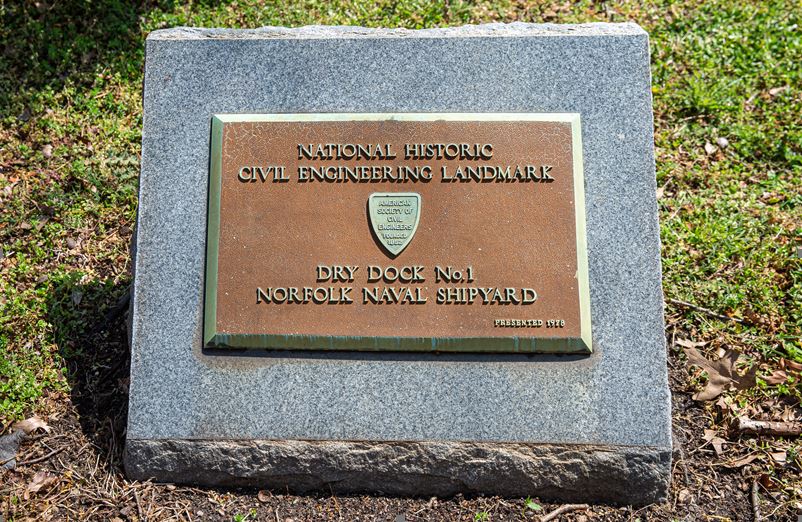Dry Dock No 1 Norfolk Naval Shipyard

Before dry docks came into use in the late 15th century in England, the only way to service a ship’s hull was to “careen” it - heave it over on its side, still floating, or laying in the mud at low tide. It was difficult and time-consuming and put great strain on the hull. The alternative was the dry dock.
In the early days of the US Navy, there were no dry docks in the country. The War of 1812 showed the small naval fleet was lacking. Underbody cleaning and repairs on vessels took days and weeks by the laborious methods of heaving down or careening. This was a serious handicap to the small fleet that could ill afford to have ships of the line out of service for extended periods of time. Expansion and improvement were vitally necessary.
In May 1824 the US Senate passed a resolution to resolve this problem and the Secretary of the Navy reported that two dry docks would be constructed: one near the mouth of Chesapeake Bay at Gosport Yard, now the Norfolk Naval Shipyard located in Portsmouth, Virginia, and one in Boston Harbor at Charlestown, Massachusetts. Loammi Baldwin Jr. (1780-1838), a noted Boston engineer, was selected to design and construct the dry docks.
Construction began in December 1827 with Baldwin appointed Engineer in Charge. His chief assistant was Boston architect-engineer Alexander Parris (1789-1852). Parris was noted for his granite building designs, which included St. Paul’s Cathedral and Quincy Market in Boston and the Executive Mansion in Richmond, Virginia. While primarily serving as superintendent of construction at Charlestown, Parris did accompany Baldwin during his visits to both sites.
Baldwin appointed William P. S. Sanger (1810-1890) as resident engineer at Gosport Yard. Sanger was a young 17-year-old serving an engineering apprenticeship under Baldwin. After completing work on the dry dock, he continued working with the Navy, and in 1867 was appointed "Chief Civil Engineer for the Navy".
The two dry docks were constructed simultaneously. While not identical, they were essentially built from one set of plans. In both dry docks the principal construction material was granite from Quincy, Massachusetts, much of it transported from the quarry to a dock on the Neponset River in Milton (a Boston suburb) on the Granite Railway, itself a National Historic Civil Engineering Landmark.
The design and construction of the two dry docks was truly a prodigious undertaking in 1827. While a few dry docks had been built in Europe, the new dry docks had to be built for American conditions and using available machinery components. It was therefore a new engineering-venture that demanded great skill and ingenuity. The size alone was a challenge at a time when steam power was very limited in its applications. The hydraulic design for the system of culverts, pump wells and reservoirs was another engineering project of great magnitude. The fact that the dry docks are still operating today attests to the quality of both the design and construction of the pilings, foundations, and the stone structures.
In 1833, the Gosport (Norfolk) Dry Dock received the first ship of the line when the USS DELAWARE entered the dry dock. One week later the Charlestown Dry Dock received the USS CONSTITUTION. The Norfolk Dry Dock is a National Historic Landmark and the Charlestown Dry Dock and its original pump house are part of the Boston National Historical Park.

